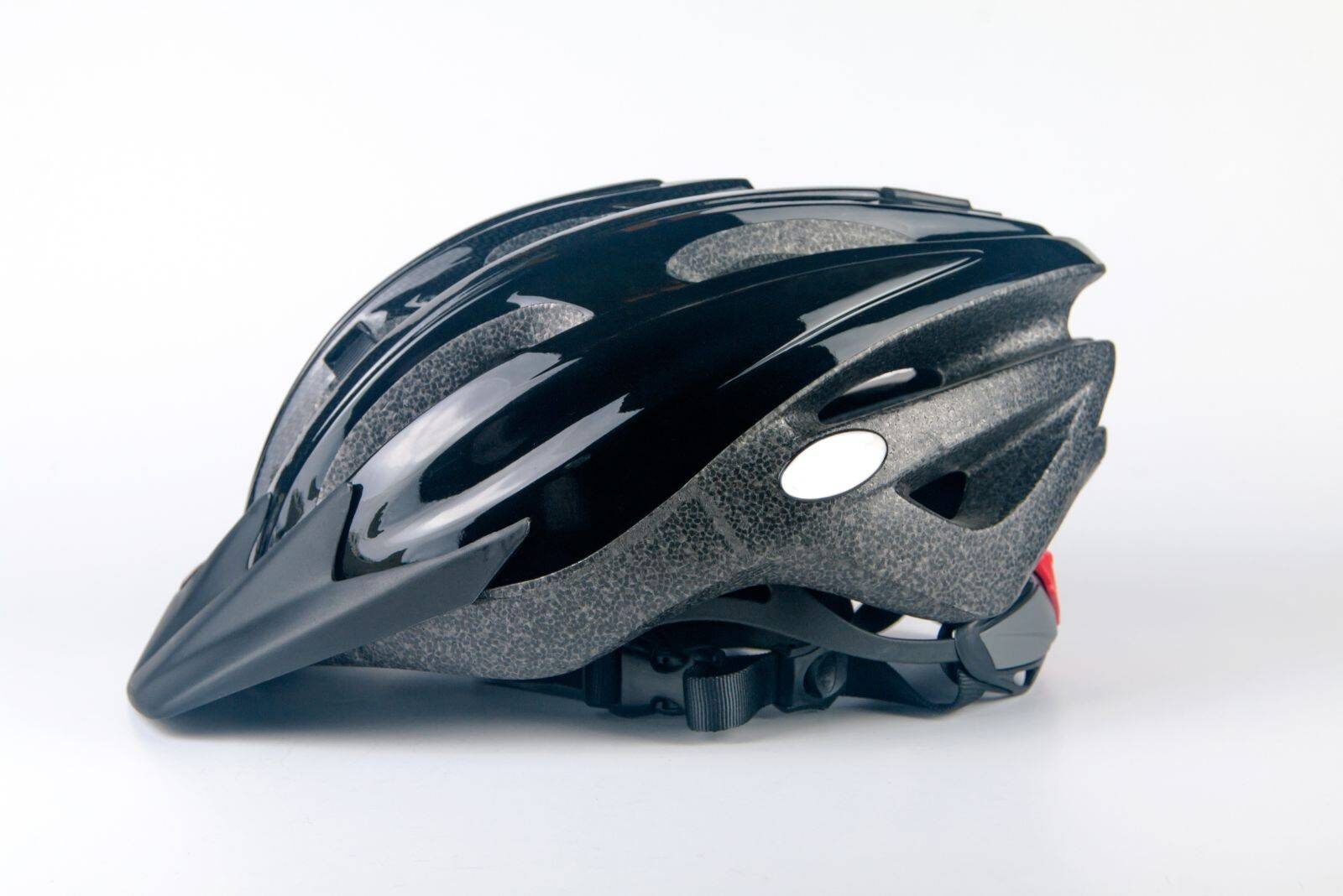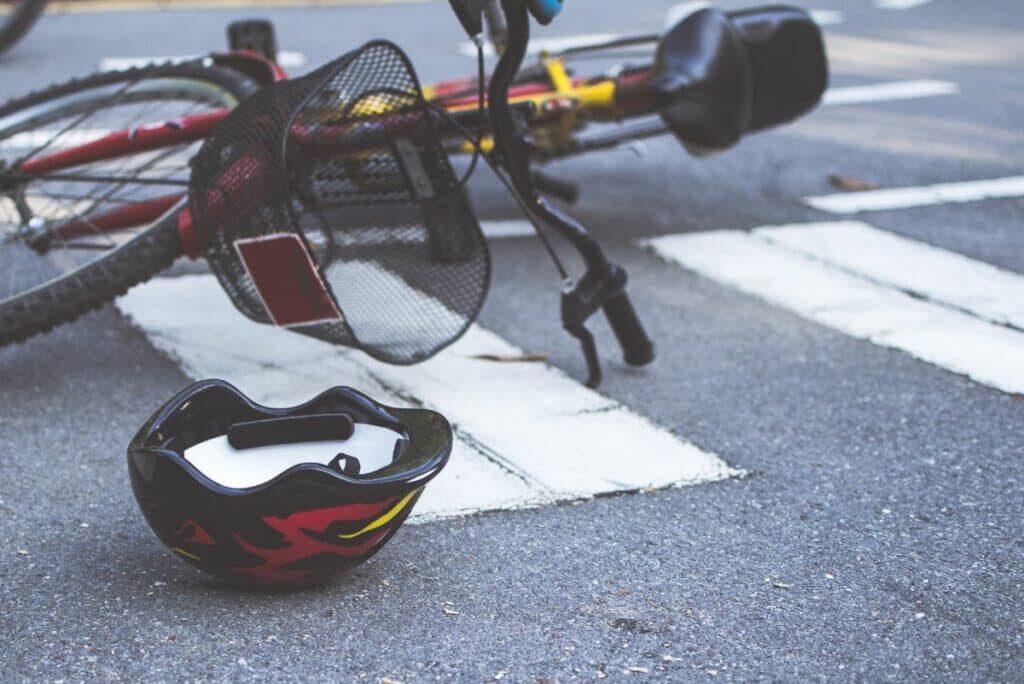
While riding your bike it’s a good idea to protect yourself by using a helmet. Your head is obviously a very important part of your body to protect, to prevent brain injuries and death from occurring upon impact.
As more people globally turn to bikes, in some countries (as well as cities), such as Australia, it’s a legal requirement to wear a helmet while riding a bike. Not only that, but the helmets have to be approved by the government and fastened up properly.
Elsewhere, helmets should be marked with the safety standard EN 1078 for adults or EN 1080 for children, to show they’ve passed safety regulations.
But are helmets really needed? In many countries such as the Netherlands and Denmark, where cycling is very popular and part of their lifestyle and culture, brilliant infrastructure means cyclists have use of protected bike lanes, meaning a lot of cyclists do not feel the same need (nor legal obligation) to wear a helmet while riding.
We delve into the stats on helmet usage and safety to see what’s really going on in the world and if they are needed or not.

Bike Helmet Statistics
- Helmet use has been estimated to reduce the odds of a head injury by 50% (IIHS)
- During research by Virginia Tech and the IIHS, they found that helmets with MIPS technology performed better during safety testing (IIHS)
- In 2018 just four of the 30 helmets initially tested by Virginia Tech earned 5 stars (IIHS)
- As of 2021 Virginia Tech has tested 139 bike helmets in total. In addition to the 73 helmets with 5-stars, another 37 earn 4 stars (IIHS)
- A study from the University of New South Wales, in Australia, found that wearing a helmet can reduce the chance of a fatal head injury by 65% (Jake Olivier)
- A study from University of New South Wales found helmet use is associated with odds reductions of 51% for head injury (Jake Olivier)
- A study from University of New South Wales helmet use is associated with odds reductions 69% for serious head injury (Jake Olivier)
- A study from University of New South Wales helmet use is associated with odds reductions 33% for face injury (Jake Olivier)
- One 2021 study found that The most common injury in patients with a bicycle crash is a concussion (National Library of Medicine)
- A study 2021 found that Helmets did not prevent concussion after bicycle rider’s crash in our patient population (National Library of Medicine)
How Many Cyclists Wear Helmets?
- Between 1997 and 2005, New York City found that between 14%-20% of high school students wore helmets while riding their bike (NYC Gov)
- Between 1997 and 2005, New York City found that 49% of cyclists on off-street paths wore a helmet while riding (NYC Gov)
- Between 1997 and 2005, New York City found that only 22% of cyclists on the streets wore a helmet while riding (NYC Gov)
- The 2019 DERKA study found that across the nine European capital cities they looked into, the lowest figures for helmet use were recorded among teenagers (DEKRA)

Bicycle Helmet Use Statistics
- New York City has provided over 260,000 free bicycle helmets to New Yorkers (NYC Gov)
- In New York, helmets are required by law for children age 13 or younger as well as working cyclists (NYC Gov)
- In 2019 DEKRA Accident Research found that in Amsterdam just 1.1% of the city’s cyclists wear helmets (DEKRA)
- In 2019 DEKRA Accident Research found that out of 9 European capital cities London recorded the highest helmet use by far at 60.9% (DEKRA)
- In 2019 DEKRA Accident Research found that out of 9 European capital cities found that 22% of the 12,700 cyclists, pedelec riders, and scooter/e-scooter users asked, were wearing a helmet (DEKRA)
- The DEKRA study notes that wearing a helmet was a legal obligation for children aged under 12 in Austria and France, under 15 in Slovenia, and under 16 in Croatia (DEKRA)
Cycling Safety Statistics
- In 2001, nearly 314,600 children ages 14 and under were treated in hospital emergency rooms for bicycle-related injuries (Safe Kids Worldwide)
- In 2001, children ages 14 and under accounted for 36 percent of bicyclists injured in motor vehicle crashes. It is estimated that collisions with motor vehicles account for nearly 90 percent of all bicycle-related deaths and 10 percent of all nonfatal bicycle-related injuries (Safe Kids Worldwide)
- Children ages 14 and under are nearly four times more likely to be injured riding in non-daylight hours (e.g., at dawn, dusk or night) than during the daytime (Safe Kids Worldwide)
- In the UK there were around 10.4 million cycle trips for every cyclist fatality, 9.4 in 2020, with the general risk of injury of any severity whilst cycling is just 0.045 per 1,000 hours of cycling, 0.025 in 2020 (Cycling UK)
- The Walking and Cycling Index (formerly Bike Life) from the 18 cities they assessed in the UK during 2021, found that 37% of all residents think the level of safety for cycling in their local area is good (Sustrans)
- The Walking and Cycling Index also discovered in 2021 that from the 18 UK cities they assessed, 29% of all residents think the level of safety for children cycling is good (Sustrans)
- Between 2015-2019, in the UK, when tracking riders covering over a distance equivalent to 1,000 times round the Earth at its widest point: One cyclist is killed, 33 are seriously injured, 103 are slightly injured (Cycling UK)
- In 2020, over the same distance as previously referred to, 0.70 killed; 21 seriously injured; 59 slightly injured (Cycling UK)
Bicycle Helmet Safety Statistics
- Between 1996 and 2005, nearly all cyclists (97%) who died in New York City on a bike, were not wearing a helmet at the time of their death (NYC Gov)
- Between 1996 and 2005, only 3% of cyclists who died in New York City were wearing a helmet at the time of their death (NYC Gov)
- Between 2001 and 2003, in New York City helmet use was only documented in 33% of crashes resulting in serious injuries (NYC Gov)
- U.S. are required by the Consumer Product Safety Commission (CPSC) to pass a series of tests. The only requirement is that the helmets prevent head impact accelerations over 300g (a level associated with skull fracture or severe brain injury), yet no requirement for helmets to limit concussion-level forces, which are more common among bicyclists in crashes (IIHS)

Bicycle Helmet vs No Helmet Statistics
- The American Journal of Surgery found that helmeted bicycle riders had 51% reduced odds of severe TBI (traumatic brain injury) in comparison to non helmet wearing riders (The American Journal of Surgery)
- The American Journal of Surgery found that helmeted bicycle riders had a 44% reduced odds of mortality in comparison to non helmet wearing helmet (The American Journal of Surgery)
- Helmet use also reduced the odds of facial fractures by 31% in comparison to non helmet wearing riders (The American Journal of Surgery)
- In the US, deaths for cyclists not wearing helmets has fallen from 69% in 2010 to 57% in 2020 (IIHS)
- During 2020 in the US, 18% of cyclists deaths were riders wearing a helmet (IIHS)
- During 2020 in the US, 57% of cyclists deaths were not wearing a helmet (IIHS)
- A total of 835 bicyclists were killed in crashes with motor vehicles in the US throughout 2016 with more ore than half of those killed in 2016 weren’t wearing helmets (IIHS)
Statistics on Wearing a Bicycle Helmet
- Five well conducted case-control studies met our inclusion criteria. Helmets provide a 63 to 88% reduction in the risk of head, brain and severe brain injury for all ages of bicyclists (Cochrane)
- Helmets provide equal levels of protection for crashes involving motor vehicles (69%) and crashes from all other causes (68%). Injuries to the upper and mid facial areas are reduced 65% (Cochrane)
- In the US, 29 states have no laws surrounding helmet usage (IIHS)
Cycling Helmet Statistics
- Tests on children’s bicycle helmets show helmets offer up to 87% reduction in the acceleration experienced by the skull during an impact (First Aid for Life)
- Tests on children’s bicycle helmets show helmets can help the skull resist forces up to 470 pounds in a crush accident (First Aid for Life)
- American Journal of Surgery, also concluded that riders with helmets were 44% less likely to die from their injury, and 31% less likely to break facial bones (The American Journal of Surgery)
- Virginia Tech researchers with the support of IIHS found that of the four 5-star helmets in the initial test group, all are equipped with a Multi-Directional Impact Protection System (MIPS): a technology that creates a low-friction layer inside the helmet (IIHS)

Head Injuries Cycling Statistics
- RoSPA found head injuries are very common with data from hospitals showing that 40% of adult cyclists and 45% of child cyclists suffer head injuries (RoSPA)
- RoSPA also found that three quarters of cyclist fatalities have major head injuries (RoSPA)
- Between 2004 and 2005 in New York City, there were 38 deaths of riders not wearing helmets, of this number 29 had head injuries (NYC Gov)
- In 2001 nearly half (47%) of 314,600 children ages 14 and under, who were treated in hospital emergency room for bicycle related injuries were diagnosed with a traumatic brain injury (Safe Kids Worldwide)
- A 2013 study in Australia found that helmet use was associated with reduced risk of head injury in bicycle collisions with motor vehicles of up to 74%, and the more severe the injury considered, the greater the reduction. Particularly head injuries such as skull fractures, intracranial injury and open head wounds (M.R. Bambach)
The Final Thought
Cycling offers many incredible benefits both physically and mentally. However, ensuring safety for cyclists and other vulnerable road users should be a priority, especially when sharing the road with dangerous drivers. Although wearing a helmet is a fantastic option as the statistics prove that the benefits of wearing a helmet undoubtedly protects the brain during head impacts, cyclists need safer places to ride.
But it is important to note that some helmets are safer than others. Just because they all pass the basic testing, doesn’t mean they are all created and designed equally. Some helmets on the market have added protection within them to stop rotational impacts and cushion the blow to the brain when the impact occurs, such as MIPS.
Therefore maybe these types of helmets should be the new standard? Or would these pricier options mean potential or current cyclists cannot afford to participate in the activity?
With this being said, it looks like the best overall option to decrease accidents without forcing people to wear a helmet by law, would be to invest in proper cycling infrastructure: given the countries with proper protected bike lanes have far fewer accidents and often have a relaxed view towards wearing a helmet.
With more and more people turning to their bike as their preferred mode of transport, come rain or shine, it will be expensive to implement change in the form of better bike lanes but there is the demand and need for them. If an old city with lots of old buildings like London in the UK can do it, why can’t other cities and areas across the world?
To conclude, what cyclists really need are protected bike lanes to keep themselves safe. But especially with the increased popularity in E-Bikes and E-Scooters which allow us to ride faster, helmets are still a great idea. The time and cost for such infrastructure to be built may be too demanding for some local authorities, which is of course a total shame, thus protecting yourself by wearing a helmet is a great start. But if governments want everyone to opt for the greener transport option of cycling, they need to make it safe and accessible for everyone and for all ages.
The post Bike Helmet Statistics: 51 Stats on Usage and Safety appeared first on Discerning Cyclist.
